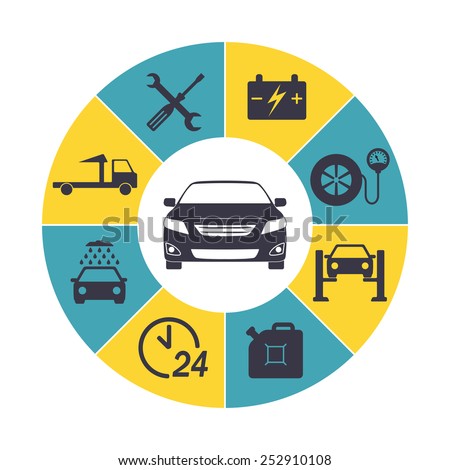Evaluating Your Car'S Warning Indicators: What They Truly Communicate
Evaluating Your Car'S Warning Indicators: What They Truly Communicate
Blog Article
Short Article By-Boye Dalgaard
When you're behind the wheel, those beautiful caution lights on your control panel can be a little bit bewildering. Do you recognize what they're attempting to tell you regarding your automobile's health? Comprehending the importance of these lights is important for your safety and security and the durability of your lorry. So, the following time one of those lights appears, would not you wish to understand its message accurately and take the needed steps to resolve it?
Common Warning Lighting and Interpretations
Recognize typical caution lights in your auto and comprehend their meanings to guarantee risk-free driving.
The most regular caution lights include the check engine light, which indicates problems with the engine or emissions system. If this light begins, it's critical to have your vehicle inspected without delay.
The oil stress alerting light suggests low oil stress, requiring immediate attention to prevent engine damages.
A flashing battery light may recommend a malfunctioning billing system, potentially leaving you stranded otherwise attended to.
The tire pressure surveillance system (TPMS) light informs you to reduced tire stress, affecting lorry security and fuel performance. Neglecting this could cause harmful driving problems.
The ABS light suggests an issue with the anti-lock stopping system, endangering your capability to quit quickly in emergencies.
Finally, the coolant temperature level alerting light warns of engine overheating, which can result in severe damages if not resolved swiftly.
Recognizing these usual caution lights will assist you deal with issues promptly and preserve safe driving problems.
Importance of Prompt Attention
Recognizing the typical caution lights in your car is just the very first step; the relevance of quickly addressing these cautions can not be highlighted enough to ensure your safety on the road.
When a warning light brightens on your dashboard, it's your cars and truck's method of interacting a prospective issue that requires interest. Disregarding these warnings can result in more severe problems later on, jeopardizing your safety and possibly costing you more in repairs.
Trigger attention to alerting lights can stop breakdowns and accidents. For instance, a flashing check engine light might suggest a misfire that, if left unattended, could cause damages to the catalytic converter. Resolving this promptly can save you from an expensive repair service.
Likewise, a brake system alerting light may signify reduced brake liquid or used brake pads, important components for your security when driving.
DIY Troubleshooting Tips
If you discover a caution light on your dashboard, there are a few DIY fixing ideas you can try before seeking expert assistance.
self wash car is to consult your auto's manual to comprehend what the details warning light suggests. Often the concern can be as basic as a loose gas cap setting off the check engine light. Tightening up the gas cap might solve the issue.
An additional usual problem is a reduced battery, which can cause various advising lights. Checking the battery links for rust and ensuring they're protected could repair the problem.
If a warning light continues, you can attempt resetting it by detaching the vehicle's battery for a few mins and afterwards reconnecting it. In addition, examining your car's liquid degrees, such as oil, coolant, and brake fluid, can assist fix cautioning lights related to these systems.
Conclusion
Finally, understanding your car's warning lights is vital for keeping your vehicle running smoothly and securely. By quickly resolving https://brake-service-near-me17394.digitollblog.com/29755367/the-development-of-vehicle-detailing-methods-over-the-last-years and recognizing what they indicate, you can stay clear of pricey fixings and potential break downs.
Bear in mind to consult your auto's handbook for particular information on each cautioning light and take action accordingly to guarantee a trouble-free driving experience.
Stay informed, stay risk-free when traveling!
